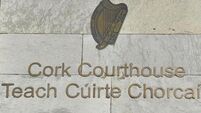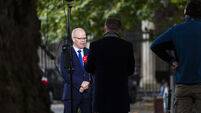€29m Crawford revamp 'single biggest investment in Cork culture’

Planning permission has been granted for an ambitious redevelopment of Crawford Art Gallery.
It’s been a week to celebrate at the Crawford Art Gallery, with the news just days ago that planning permission for a massive overhaul of the Cork gallery, including extensive conservation work on the existing building and the addition of a new eight-storey building to the rear of the site, has been granted.
News that the planning permission is through and that the project can progress past its current detailed design phase and into the process of appointing a contractor is very welcome to the gallery’s director, Mary McCarthy.
The multi-million euro revamp of the OPW-owned public gallery, which is the only designated National Cultural Institution outside of Dublin, is in the hands of internationally renowned Irish architecture firm Grafton Architects. It was originally reported as having a budget of €29m, but it’s likely to extend to considerably more than this, with assurances of further government support.
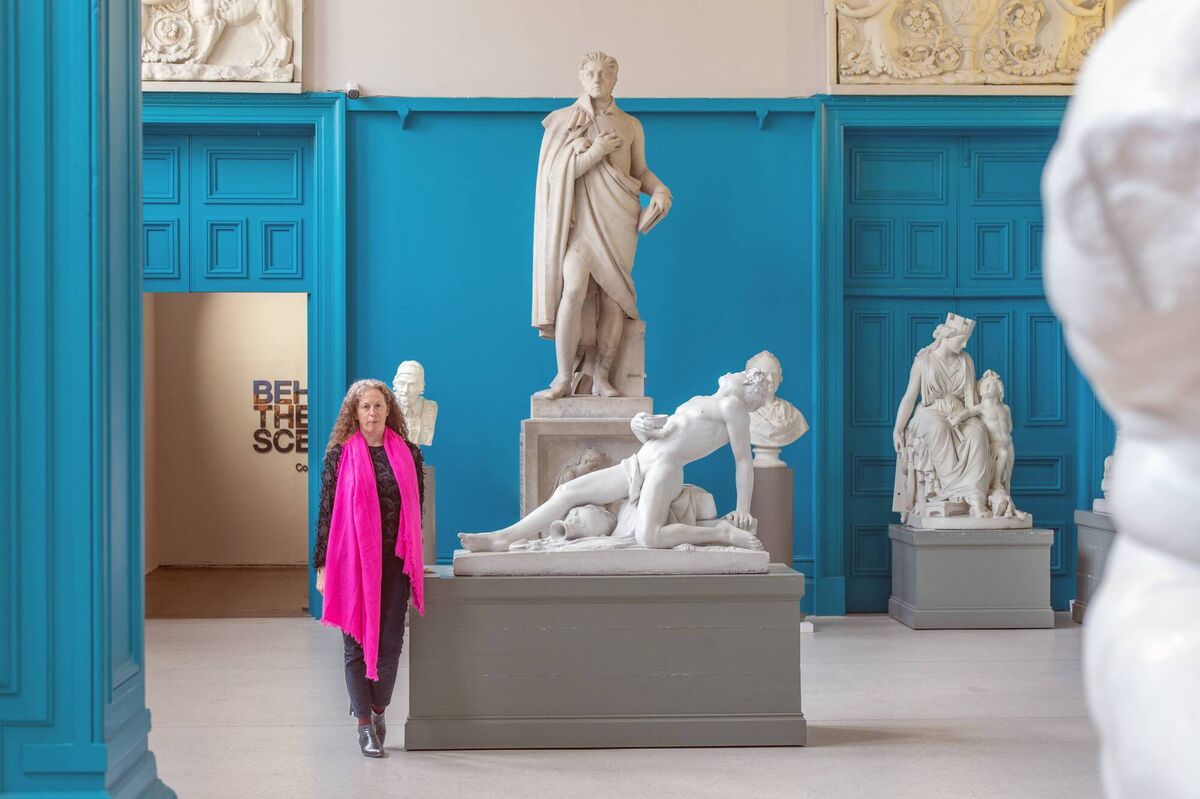
“This is the single biggest cultural investment in Cork,” says Ms McCarthy. “Is that scary? Yes. Even to get this far, there have been a lot of sleepless nights. You’re working with a fantastic team, a lot of expertise, but we’re still making informed decisions about the future of the gallery, so we’re taking all the advice we can get.
Four centuries of architecture The Crawford Art Gallery visitors are familiar with today already represents the architecture of three different centuries, Mary explains, as she gives a tour of the building to explain the change to come.
The original Custom House building dates to 1724, when Emmet Quay was an inlet of the River Lee, meaning boats docked adjacent to the façade located alongside Emmet Place.
The building became a school of design in 1850 and in 1884 a large extension with a distinctive turret was designed by architect and former student Arthur Hill. Construction was funded by wealthy local brewer William Crawford of Beamish & Crawford.
In the late 1990s, Dutch architect Erick van Egeraat designed a new modern wing to the building stretching towards Half Moon St: The extension was completed in the year 2000.
Now, the Grafton Architects design will add a fourth century to the building’s history.
“A big part of the brief is to conserve the unique heritage of this building, which is much-loved by people,” says Ms McCarthy. “We are very sensitive to how the public will perceive and experience what we do.”
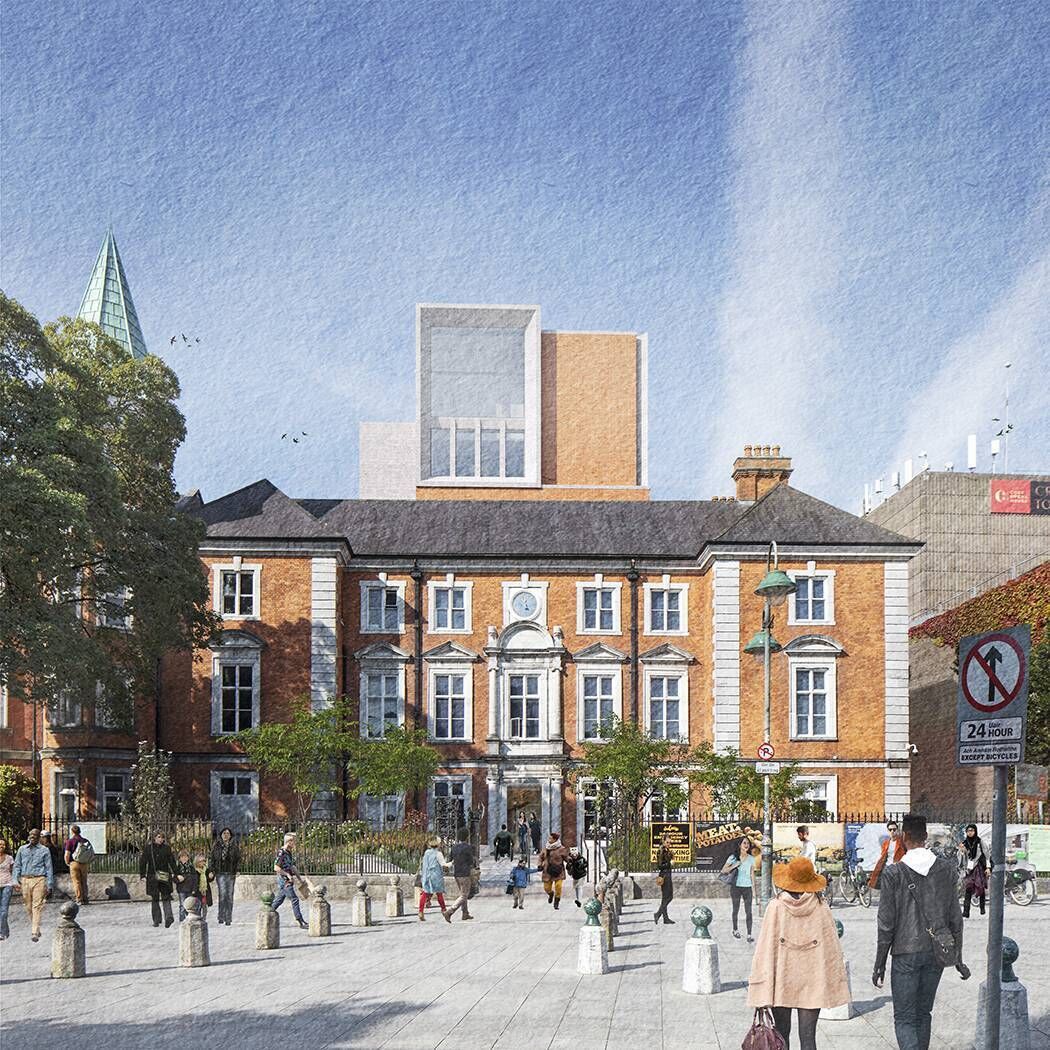
Possibly the largest change to what visitors will encounter following the redevelopment will be that the main entrance to the gallery will be from Emmet Place, with the current main door opposite Opera Lane retained as side entrance.
The part of the Custom House that now houses the café will open up into a large atrium, with access to the historic wings opening up to the left and right, and a new 70-seater restaurant facing onto Half Moon St at the rear of the building, in an area that is currently not publicly accessible.
“We want to contribute to the animation of Half Moon St so its urban form can be more positively enhanced,” says Ms McCarthy.
Reorienting the building towards Emmet Place is not only historically appropriate, but will increase permeability and visibility, with a landscaped garden drawing visitors into the building, Mary believes. This is very much in line with the work the Crawford has done in the five years for which she has been director in increasing public access and the sense of the gallery as somewhere inclusive that everyone is comfortable to visit.
By no means a custom-built exhibition space, the current building can feel labyrinthine and difficult to navigate. It’s hoped that this will be improved with a new, rationalised layout. And it’s not only people that have to get around the building.
“The other big consideration is the journey of a crate through the building: what is the largest artwork we’ll be able to bring in?” Mary says.
“A super-sized lift will go right up to the new gallery at the top and stop at all the different floors. That’s really important to us, to be able to handle works of scale. Crawford has always been ambitious in its programming, but now we can be ambitious in what we collect into the future.” The intention with Grafton Architects’ design is to make as much of the historic 18th and 19th century wings as publicly accessible as possible, she explains. At present, much of the 18th century Custom House is devoted to offices and storage, but these functions are actually better served by being located in an energy-optimised modern extension.
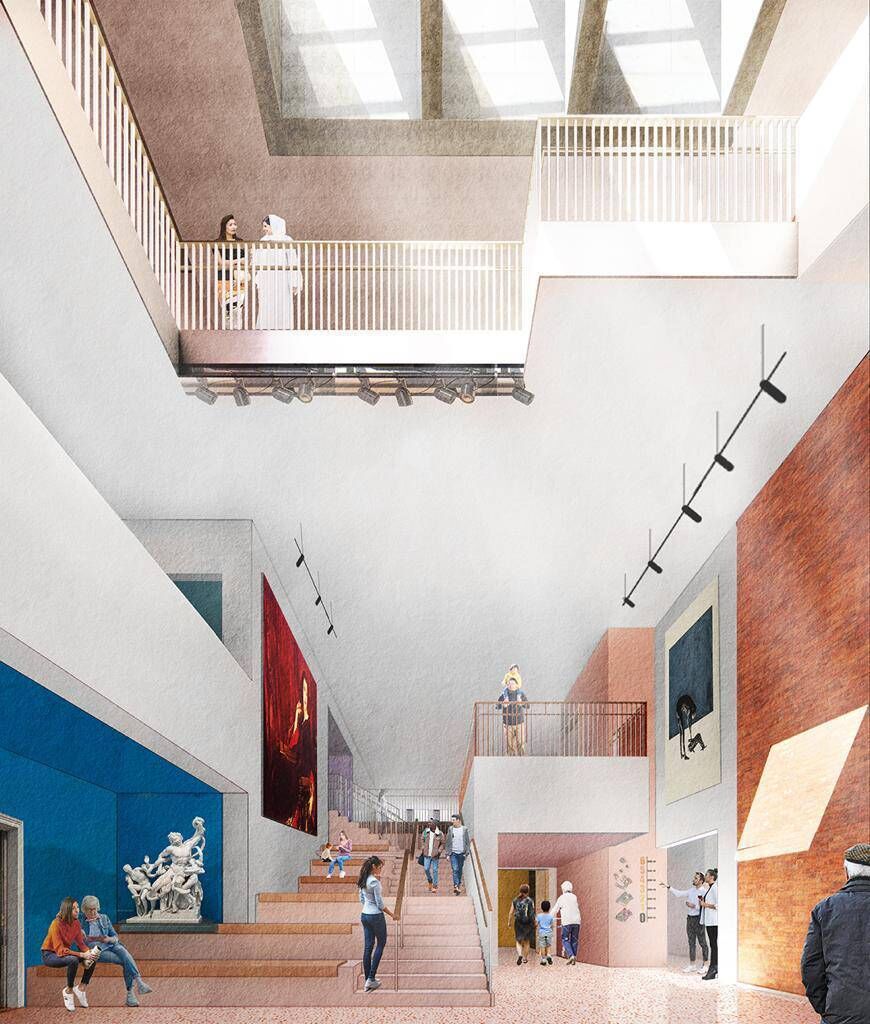
“A lot of this building will be relieved of functions that it shouldn’t have,” Mary says. The historic buildings will be allowed to breathe and will not be burdened with functionality. The new build will carry some of that functionality, like storage.” Other changes the public can expect to see include:
- The creation of a public cloakroom and locker-room as well as a meeting room for public use in the 18th century wing of the building;
- A new gallery space overlooking Emmet Place where the current toilets are located, with new toilet facilities on several floors in the new design;
- Conservation, refurbishment, and upgrades to the existing wings, with minimal changes to areas such as the ground floor sculpture gallery, but some rationalisation such as removing unsightly piping;
- The current “watercolour room” to be converted to a larger screening room for video work, with the current video room converted to a gallery space;
- Harry Clarke stained glass windows currently housed in the 19th century wing restored with the aid of a €30,000 Heritage Council grant, and relocated to a more visible location in the building;
- An eight-storey new build with a gallery with views overlooking the city on the top floor. This is not an upward extension on top of the 18th or 19th century buildings, but a new structure.
The Crawford has a collection of some 4,000 artworks on site, and the challenge in safely packing up, moving and storing this collection, is “massive”, says Ms McCarthy.
“The decant is a big task and we’ve been doing a risk analysis for that for the past year and a half.
“We are going out to tender for providers, and for security reasons the collection will be stored in multiple locations.”
When the modernist Erick van Egeraat wing was opened in 2000, with its characteristic red brick bulge on Half Moon St, public reaction to the extension was mixed. An eight-storey 21st century extension is a significant addition to the cityscape of a historic area of the city.
In its largely supportive submission on the Crawford’s planning application, An Taisce expressed “some reservations regarding the height precedent of the proposed new building” and asked that Cork City Council condition the building’s height as one-off and not as something that would set a precedent for the area.

“If you look on social media, which we do, some people are sceptical about that aspect,” Mary says.
“But we feel it’s very considered by the architects. It recedes and is different from every angle and it’s very beautiful. It’s the classic Cork combination of red brick with limestone fenestration, but very contemporary.
“When it’s open, it’s the public who will ultimately decide whether they love it, whether they feel it adds to the cityscape.”
- A contractor for the building work will be appointed by May 2024;
- The Crawford Art Gallery will remain open until summer 2024 with a full programme of exhibitions;
- In the coming year and a half, the 4,000-strong gallery’s collection will begin to be moved into storage at different locations;
- The Crawford staff hope to hold behind-the-scenes public tours of the building after all the artworks have been removed and before construction starts;
- It is estimated that building works will take two years;
- While the building is closed, gallery staff will work on repairing, restoring and cataloguing existing artworks;
- Some artworks will go out on loan or create temporary exhibitions in other institutions including OPW sites.










